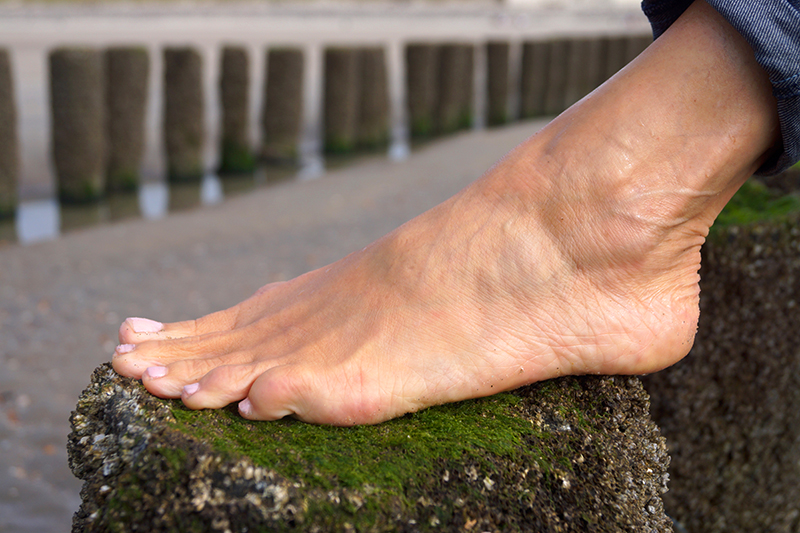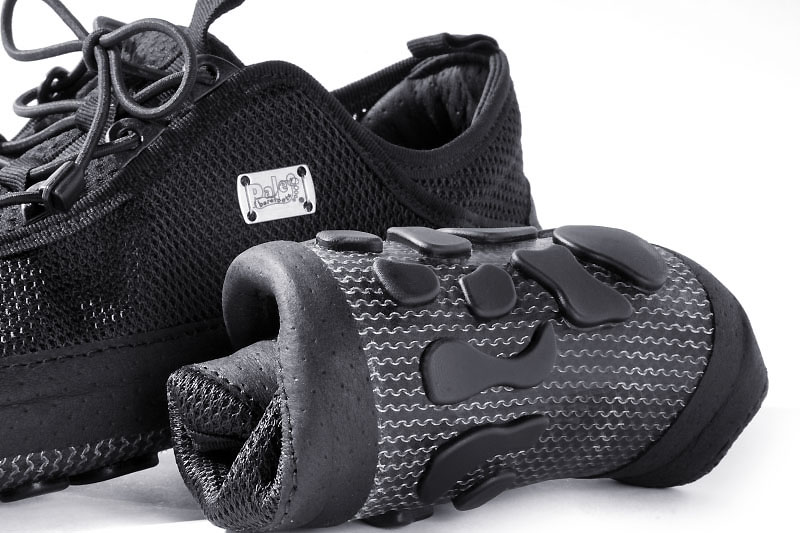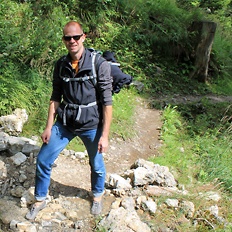05Mar
05Mar
A trend moves the masses: run on the forefoot!
 Over the last few years we've observed a growing number of discussions around running styles that advocate a front and mid-foot running style and we can only marvel at how many hundreds of new "Barefoot Coaches" have sprung up, almost daily, to offer their books and (paid) services.
Over the last few years we've observed a growing number of discussions around running styles that advocate a front and mid-foot running style and we can only marvel at how many hundreds of new "Barefoot Coaches" have sprung up, almost daily, to offer their books and (paid) services.
So where does all this sudden knowledge come from and where has it been hiding all this time? Is barefoot running as extraordinary, mysterious, unknown, forgotten and dangerous as some would have us believe?

Before one can form an opinion - in this case around trying to find their own personal style of barefoot running, most people will of course trust the majority trend followers. Due to personal distress (statistically the number of running injuries has not decreased much in decades), impatience or lack of time, many people prefer to consult with coaches or other 'experts' to change the way they run. Forefoot running is such a trend and now many runners are beginning to change their running style that have suited them for many years - no matter what shoes they've used for years and the sort of surfaces they run on.
In our opinion and experience, the combination of running shoe AND the surface you run on will affect your personal running style. This is often as individual (not without good reason) as the structure of our feet are.
For example: let's imagine a rough gravel path and a seasoned marathon runner who has run for years exclusively on roads, wearing normal padded running shoes.
- With the shoes he usually wears, he has little reason to change his pronounced heel running style that he uses on the road - due to the shoe padding he will have little cognition of how the gravel surface feels. Nothing hurts, so why do anything different here? But the gravel presents a real danger to him, despite adequate damping; a danger that he cannot recognize or may recognize too late. Thick, hard shoe soles can easily result in a slip in a fraction of a second on a jutting stone and lead to serious ankle sprain (twisted ankle) or worse. At full speed, the body exerts enormous force on the feet, and the only part of the foot that would be able to absorb this shock is the ankle. The other parts of the foot can't come into play - despite soft padding, arch supports, protected toes etc. Running injuries during intense runs are often outside of the shoe area (ankles, knees, calves, thighs etc). To put it a little differently: skiing accidents often result in torn ligaments, broken legs, twisted knees, but rarely in broken metatarsal bones or toes. Any sudden force in such cases are, rather than being placed on the foot (our natural walking apparatus), moved to the ankle upwards. Not a good result! It's no surprise then, that most distance runners prefer paved, clean, flat roads.
- Imagine we now take that same runner and give him a minimalist style shoe, with a thin 3-4mm thick sole and once again let him lose on the gravel path. Perhaps he starts to run as usual, on the heel. But what happens when he hits that first sharp stone and it punches painfully against his fast descending heel? Fearing injury, he will naturally slow his pace, look where he's going, and instinctively shift his foot to a midfoot/ball strike and resist the urge to push his weight forward through his knees. By doing this, he naturally gives the foot the time it needs to adjust itself and distribute his bodyweight differently if he feels any sharp stone or obstacle underfoot.
- What if we simply took his shoes and sent him out barefoot? We know that since the ground is likely to be extremely uncomfortable that most likely he'd end up gingerly hopping around on the sharp stones on tiptoes and getting no running done at all.
- Take a fourth example. Let the same heel striking runner loose - again completely barefoot - in a lush grassy meadow, or on the soft warm sand of a beach. How will he run there? It's quite normal in that situation for most people to be a heel strike runner! Why?
Injury prevention vs. energy consumption!
The nature of the human body is to constantly balance two extremes. Firstly, ensuring survival and protection from injury (which ultimately affects the ability to live and procreate) and secondly, minimizing energy consumption. Priority is always given to injury prevention - protecting the body from damaging itself and everything else is subordinate to these functions - in fact these functions is beyond our conscious control.
In terms of the above example on the gravel road - this means that feedback from painful soles alerts the body to take up a posture that protects it from impending danger. Slower movement and forefoot striking with bent knees is safer but consumes more energy (especially combined with flailing arms to maintain balance). Once there's little danger (sandy beach or soft grass) the body reverts to a heel - toe transition to save energy and achieve a more pleasing gait.
Anyone can run on the forefoot!
Although he may not be aware of it, our marathon runner will tend to run on the forefoot in special circumstances - for instance fast race starts and sprints - where heel running is simply impossible. However, it's likely that barefoot, or in minimalist shoes, he won't be able to run for long (or at least not without painful consequences). The problem is not so much that he needs to learn to run again, but rather that he will be required to exercise his body (in this case the entire foot structure) gradually to achieve the flexibility and stamina needed to respond to the changed conditions.
Primarily, this includes acclimating to the feedback of the ground on his unaccustomed nerve endings. Shoes really do make our feet blind and deaf! For the feet, it's as if you were constantly required to wear thick mittens on your hands all the time. To retrain the senses, it's important that the new stimuli be as varied as possible. Two things at least should change, one is to either wear no shoes, or true minimal shoes (that allow full flexibility and feeling for the foot) and the second to vary the surface that you run on, rather than just sticking to asphalt! Try different surfaces, but walk initially, and then jog or run later. This can take months.
Those who want a natural running style need to train in natural environments!
To develop a natural running style takes time and effort; run in meadows, hills, rivers, mountains and beaches - natural conditions where the surfaces that our feet evolved and optimized to over millions of years can be found. Flat paved roads or gym treadmills are insufficient as they place little demand on the ability to engage the mind, sight, ligaments and muscles of the foot completely. These surfaces train only simple repetitive motions, angles, time and speed are trained in isolation. There may be enough power but gaining the ability to flow and shift bodyweight efficiently and naturally is important to running smoothly. All runners using stiff and padded shoes on a flat surface are likely to eventually experience injury be it caused by a curb, a lone stone in the road, a wet patch, a sudden slope or any other infrequently encountered obstacle.
Findings: All running variants (forefoot, mid foot and heel striking) are natural movements and all find their ideal conditions, flow into each other and constantly change with the surface. Those who simply want to measure themselves on treadmills will likely regret the short sightedness of their mistake. The skills of our feet are as complex as their construction, to strengthen them preserve their natural flexibility requires that they experience exercise at maximum bandwidth!
Any other way of dealing with the feet - as the current discussions heard out and about - such as the compulsion to attempt to run only on the front of the foot, will inevitably lead to a completely different set of injury patters. Minimalist shoes or barefoot in combination with natural surfaces should be the real trend! Get off the road and run in nature! Cushioned running shoes for concrete and asphalt - minimal footwear and bare feet for natural soils. Only this can lead to a natural running style and improve overall health through increased stimuli. However, not every runner can change running style immediately! If you've given yourself years to learn to run on roads with a style of shoe, don't expect to be able to switch overnight to other shoes and surfaces!
Through years of unchanging muscle loads, your joints, bones, tendons and ligaments are adapted to your running style. In order not to overwhelm the weaker structures that have degenerated over time, most runners will have a longer transition to their own personal combination of surface and shoe. Everyone (including non-runners) should take time to strengthen their feet gradually. You can start to integrate walking barefoot or add some short periods of wearing minimalist shoes into your workouts and build up gradually.
Final Thought: The mainstream audience is still learning what going barefoot means. Currently, general statements and recommendations should be examined critically. A recommendation is not necessarily correct, even if it's proclaimed by many people. It's sometimes hard to distinguish experts from the 'free-riders' who just follow on and regurgitate what they've heard someone else say.
From our personal experience, we have this advice to offer in developing your own running style. Simply listen to your body and pay attention to its reactions. You'll quickly recognize where you feel comfortable - the type of shoe/minimal and surface. If you observe carefully, you'll find your body knows exactly what is wrong, what does or doesn't work, and when something is too much. You just need to be patient and look a little more carefully at what you do than before.
Rely on your common sense and don't listen to us or anyone else to tell you how you feel!
You must be logged in to post a comment.
Click here to log in





















0 customer responses